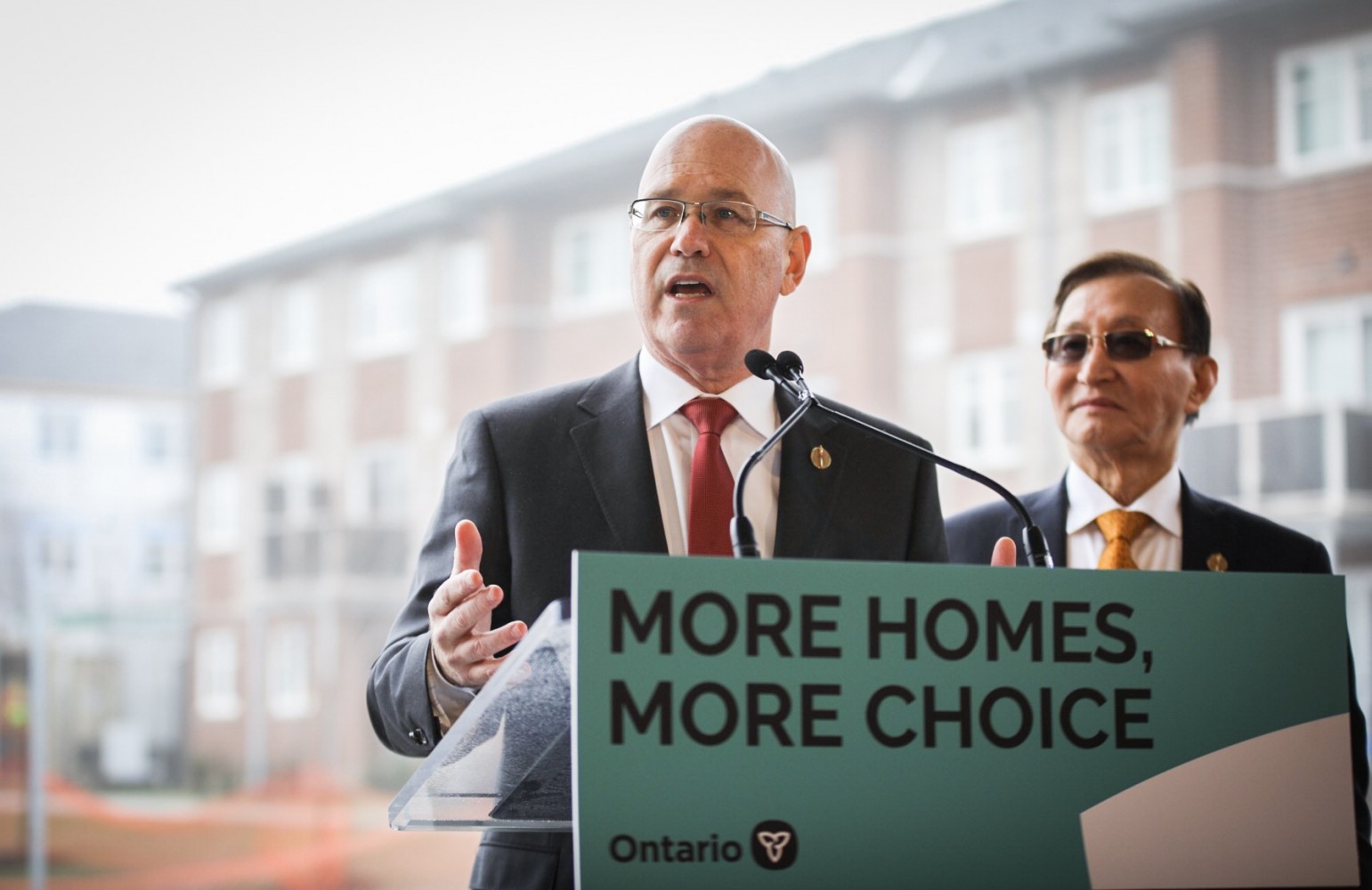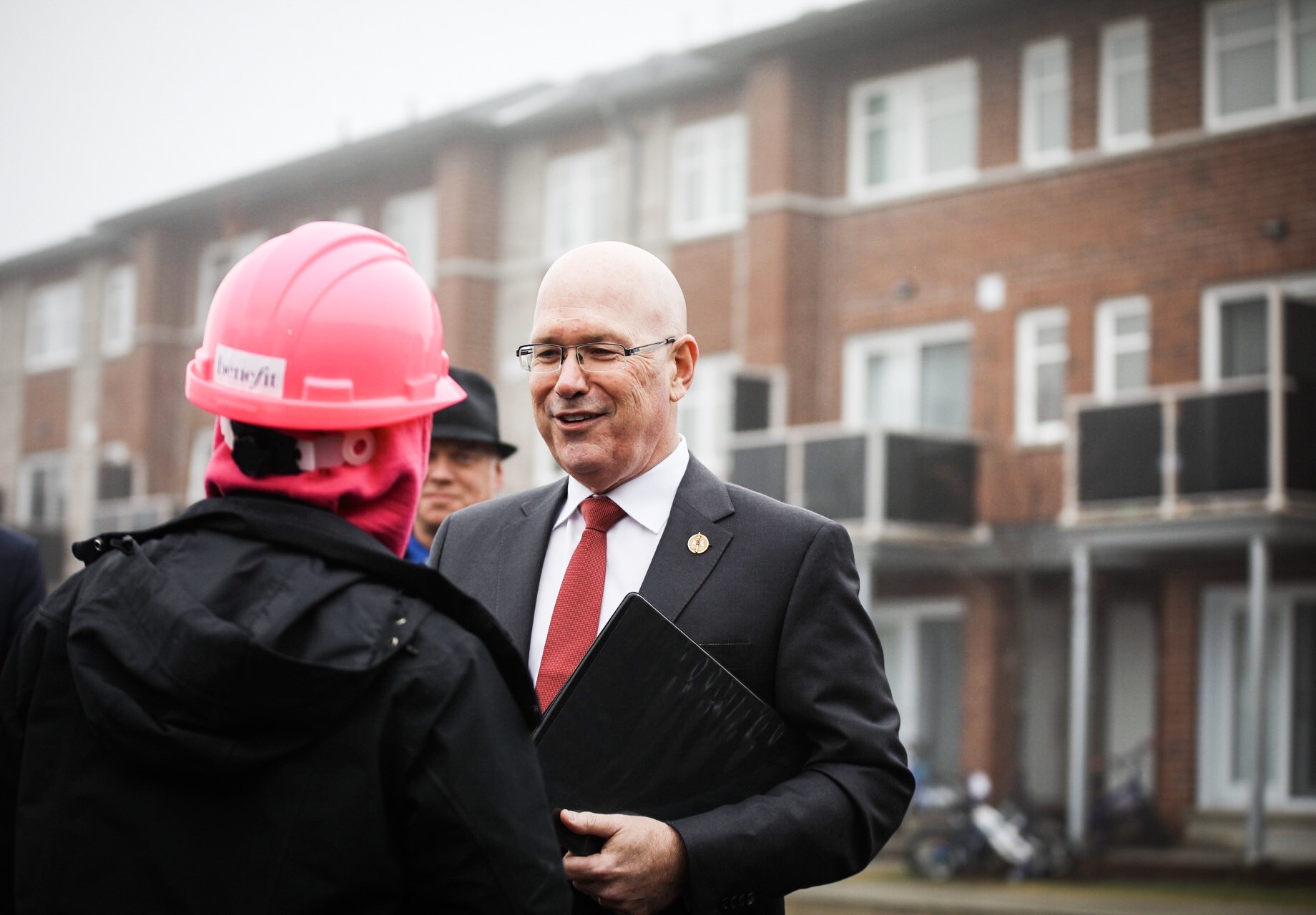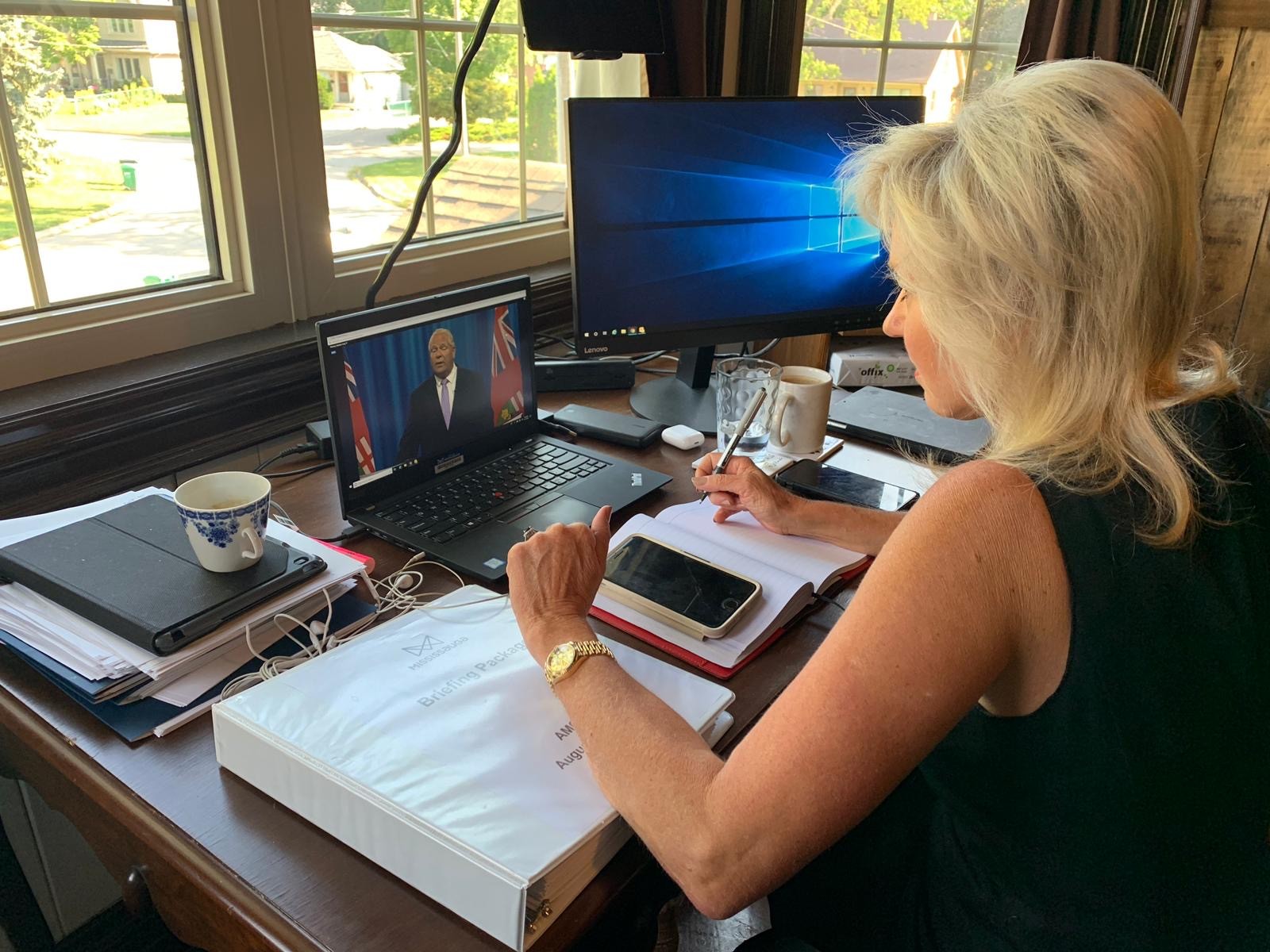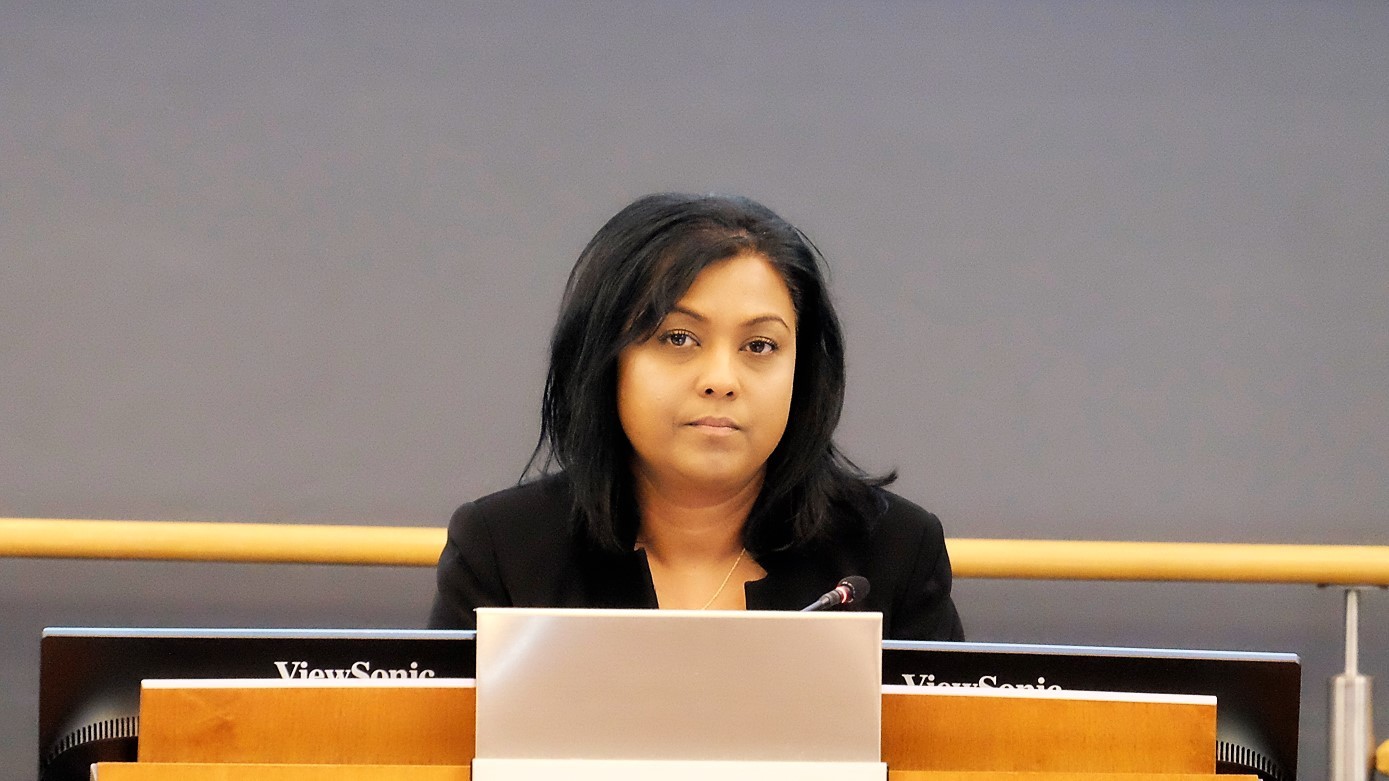
Mississauga asks province to prioritize affordable housing after minister strips zoning meant to address the crisis
Public housing is the hot potato no politician wants to handle.
In the 1990s, governments lobbed it between one another, with no one wanting to take responsibility. First, the federal Liberals downloaded the file, and its significant cost, to provinces, removing it from their own portfolio. In Ontario, the PC government under former premier Mike Harris turned around and immediately handed it to municipalities. Without any way to palm it off further down the political chain, or the financial resources to fund a mounting need, cities were stuck. Underfunded, they have spent the past three decades begging the Province and Ottawa for the cash to fix a desperate situation.
Since the ‘90s, the issue has been mired in confusion and inaction. One level of government has the money and another has the responsibility — none have all the tools required.
Cities have tried different policies to force developers to provide affordable units, while other levels of government have hopped into the trenches for a photo-op and to help out here and there. Last year, the Governments of Canada and Ontario combined to provide a housing benefit to help some Ontarians pay rent. It epitomized the housing conundrum governments struggle with — offering a bandaid and no long-term plan.
The cash provided relief to eligible recipients to help them pay rent. It did nothing to address the chronic lack of affordable housing stock, instead helping to line the pockets of private landlords.

Municipalities have limited power to force developers to construct affordable units.
In late July and early August, Peel benefitted from a rare flurry of housing announcements. On July 30, a motley crew of Provincial and City politicians gathered at a construction site on Lakeshore Road, Mississauga, to announce another small dose of help for Peel. It was confirmed the federal and provincial governments will combine to invest $23.5 million in two separate affordable housing projects, creating a total of 219 new homes.
"Our government is committed to ensuring all Ontarians have access to an affordable place to call home," Steve Clark, Minister of Municipal Affairs and Housing, said at the event. "These important investments in Peel Region are the latest examples of the good things that can happen when we work together to help those most in need in our province."
On Lakeshore Road, 68 units will be constructed by Indwell, a plan that has been public for quite some time and was even an election issue for local MP Sven Spengemann. A second project, East Avenue, will create 151 affordable housing units for individuals, families and seniors.
(Left to right): Mississauga Councillor Stephen Dasko, Mayor Bonnie Crombie, MP Sven Spengemann and MPP Rudy Cuzzetto at the launch of Indwell in September, funded by July's announcement.
A few days later, a more generous offer was made.
The federal government promised an investment of $276.4 million over eight years into Peel’s struggling affordable housing sector. It marked the biggest ever federal investment in affordable housing for the booming region, promising desperately needed rental units.
In reality, even the record investment was a drop in the bucket.
Last June, the wait-list for affordable housing in Peel sat at almost 15,000 people, with many measuring their search for a subsidized or affordable unit in decades rather than months or even years. A spokesperson for the Region of Peel told The Pointer an updated waitlist figure would not be available until sometime in the Fall when it is presented to regional council.
In the short term, Housing Minister Clark’s July visit to Mississauga to bestow 200 or so units on the city will be welcome, as will the meatier federal promise, but without legislative and structural changes, it doesn’t even scratch the surface. Even if the dollars were available and politicians willing, it wouldn’t be possible for the Province to come into Peel and build an endless supply of new, affordable units.
Switching gear is key.

Housing Minister Steve Clark
In that spirit, councillors in Mississauga passed a motion Wednesday asking the Provincial Government to encourage developers to provide affordable housing. Referring to a portion of land located at Eglinton Avenue and Highway 403, owned by the Ministry of Transportation, Mayor Bonnie Crombie tabled a motion imploring the province to sell the land “below market value” to a developer willing to build affordable units in her city.
The move is roughly in line with attempts to create a steady stream of affordable housing from developers, instead of forcing governments to feed off scraps.
Steve Clark’s role in the quest for affordable housing solutions is confusing and somewhat contradictory.
Changes made by the Progressive Conservatives in 2019 made it significantly harder for cities to force developers to provide affordable units. Part of Bill 108, More Homes, More Choice Act, meant cities could not issue blanket orders (known as inclusionary zoning) demanding affordable units from developers.
Inclusionary zoning allows cities to force developers to include a certain percentage or square footage of affordable units in new projects. Without these orders, any below market units included are negotiated by the City instead of being required. In recent years, Mississauga Ward 5 Councillor, Carolyn Parrish, has been at the forefront of attempts to negotiate affordable housing. She has had some success, but not achieved the numbers inclusionary zoning may yield.
A plan floated last year in Montreal shows the potential power these rules can have. Earmarked to begin in 2021, Montreal intends to make developers of all new projects set aside 20 percent of new housing units for social housing, 20 percent for market affordable housing and 10 to 20 percent for family-sized units. When the rules come into force, new developers who don’t conform will have to pay a fee to the City, creating an additional stream of funds to support homelessness or affordable housing as well.
Bill 108 means similar policies can only really be applied around major transit stations in Ontario and not the entirety of a city. Both the City of Mississauga and the Region of Peel are reviewing their planning to identify which areas could qualify as ‘Major Transit Stations’ with a view to implementing inclusionary zoning requirements in the future.
Speaking to The Pointer in February, Mississauga Mayor Bonnie Crombie said she was in favour of mandating developers to cough up affordable units. Brampton Mayor Patrick Brown also indicated his support for inclusionary zoning in an email to The Pointer on July 31. However, both mayors have been silent around the regional table when it comes to discussions around affordable housing at budget time. For two straight years, Peel’s budget has included next to no investment into growing the region’s affordable housing stock.

Mississauga Mayor Bonnie Crombie
Although the Province recently helped bring 200 plus new affordable units to Peel, it was Minister Clark who took structural powers away from cities to mandate hundreds more.
Perhaps that decision is because the idea of inclusionary zoning does not play into the philosophy of the Progressive Conservatives.
Since taking office in 2018, Ontario Premier Doug Ford has been extremely vocal in his housing strategy. His plan is simple: make it easy to build in order to increase the supply of new houses and then prices will fall.
In Ontario — and especially Peel — that’s a tough sell.
Proximity to Toronto Pearson Airport, located in Mississauga, means demand for housing in the GTA is as international as it is local. Between 2018 and 2046, the province predicts Peel’s population will grow by almost 1 million people, from just under 1.5 million in 2018 to about 2.5 million. This means the quantity of supply required to house new residents and also offset prices would be monumental.
Ford’s housing strategy has avoided interfering with developers too much, instead trying to make construction easier to reduce costs in the hope they pass them on to consumers. It is a policy from a man whose links with the development world are well documented. Inclusionary zoning policies do the opposite and can push up the price of new units not under the affordable bracket.
“Inclusionary zoning is still a hotly debated topic,” Professor Larry Bourne, who has taught an urban planning and affordable housing course at the University of Toronto, previously told The Pointer. “There is no single best strategy to achieve more affordable housing. Some ask why should certain developers (and thus certain owners or renters) be asked to provide and pay for affordable housing rather than society as a whole.”
While curtailing local powers on inclusionary zoning, Clark has also begun to bolster his rights to overrule cities and developers on planning matters. Staying with the theme of reducing barriers to construction and making new housing easier to deliver to increase supply, the Minister ratcheted up his use of Ministerial Zoning Orders (MZO) to fast-track certain projects.
MZOs, used extremely rarely under past governments, allow the province to override local planning decisions and disputes. They are essentially a ministerial veto and cannot be appealed. As the Globe and Mail reported, Clark has leant on the powers far more than his predecessor. By May 26, he had issued eight MZOs in just over a year, more than the Liberals did their entire time in office. Since then, Clark has authorized further MZOs, including a controversial order in Caledon overturning two majority decisions by the Region of Peel.
The Pointer approached the province to request an interview with Clark on the philosophy of his MZO use, but the Minister was not made available. In an in-depth discussion with TVO, he said he was only using the orders to speed up the demands of councils.
That philosophy suggests he should welcome Mississauga’s recent request with open arms.
“This is following the lead of municipal partners. We’re being adamant with them that it doesn’t touch the Greenbelt in any way, shape, or form. The two questions I ask are: Is it in the Greenbelt? The answer is no. Does the council support it? If they don’t, the answer is no,” he said. “It’s been a very successful endeavour for our government to use the zoning order as an opportunity to create opportunities.”
How this squares with his decision to overturn the Region of Peel’s votes is unclear.
The increased reliance on MZOs raises further questions in the affordable housing sector. Some, including Clark, argue they are necessary to break local log jams and bring housing projects to the market quicker. Local planning bureaucracy is thorough, but extremely slow; faced with a worsening housing crisis, it can be argued immediate action is needed.
The Province’s recently adopted omnibus bill, the COVID-19 Economic Recovery Act, included enhanced powers for Clark to use MZOs. A spokesperson for the Province told The Pointer this is to target affordable developments.
“This enhanced tool could be used to establish the percentage of affordable housing units in a development and require the municipality and landowner to enter into an agreement dealing with other matters related to inclusionary zoning. We are committed to building the right types of housing in the right places, to make housing more affordable and help taxpayers keep more of their hard-earned dollars,” a Provincial spokesperson wrote in an email.
Since the current legislation allows cities to issue inclusionary zoning orders around their transit stations and it was Clark himself who rolled back their broader power, it is unclear how taking matters into his own hands will help. Critics view the move as a serious overreach of provincial power without obvious solutions. Some fear it could be abused if the demands of lobbyists succeed.
Cities and regions are also on the end of intense lobbying from the development industry, but the long planning process (and option to appeal projects to the Local Planning Appeals Tribunal) means it is harder to ram through controversial projects. An ever-increasing use of MZOs could potentially further political interests instead of affordable housing.
Changes in the COVID-19 Economic Recovery Act seem to put decision making powers in the hands of the Province, but offer no long-term dollars or tools to municipalities. Minister Clarke’s plans resolve a problem municipalities were not complaining about, while doing little to address the serious funding problems places like Peel have with affordable housing.
“Get rid of the planning department, then,” Caledon regional councillor Annette Groves previously said to The Pointer, referring to Clark’s decision to issue an MZO in her town. “If you’re going to issue MZOs and have no respect or regard for public policy and public engagement and your own policy, get rid of the planning department. Get rid of the Region of Peel and you’ll save yourself a whole lot of money.”

Caledon Councillor Annette Groves
After years of desperate pleading from cities for provincial aid for affordable housing, the Government of Ontario has taken action, but perhaps not done what was asked. A confusing re-distribution of power appears to be underway, while the funding cities need continues to be offered in tiny little drips, not as part of a fulsome plan to move forward.
Email: [email protected]
Twitter: @isaaccallan
Tel: 647 561-4879
COVID-19 is impacting all Canadians. At a time when vital public information is needed by everyone, The Pointer has taken down our paywall on all stories relating to the pandemic and those of public interest to ensure every resident of Brampton and Mississauga has access to the facts. For those who are able, we encourage you to consider a subscription. This will help us report on important public interest issues the community needs to know about now more than ever. You can register for a 30-day free trial HERE. Thereafter, The Pointer will charge $10 a month and you can cancel any time right on the website. Thank you.
Submit a correction about this story


